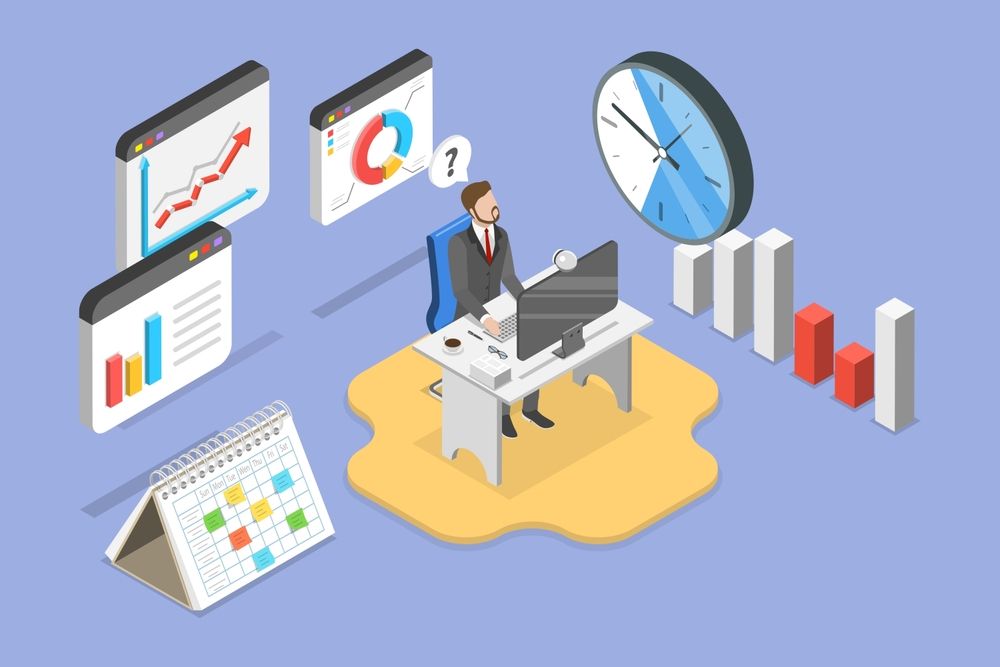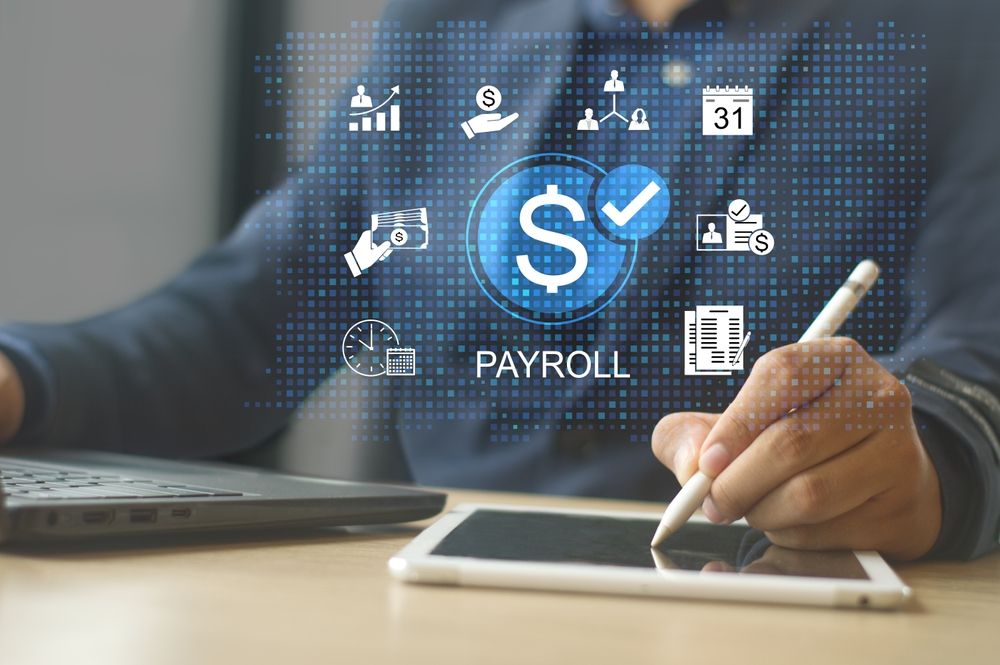If you’ve ever dealt with compliance errors, delayed salaries, or unhappy employees, you already know how payroll issues can derail business operations. What should be a straightforward process often becomes a source of stress, wasted hours, and even financial penalties.
This is where strategic HR payroll software makes all the difference. By combining automation, compliance management, and employee empowerment, it doesn’t just process paychecks—it transforms the way your business operates.
At ClusterHR, we’ve seen too many businesses repeat the same mistakes: clinging to outdated spreadsheets, patching payroll gaps at the last minute, and dealing with employee dissatisfaction month after month. But we also know the solution—streamlined, future-ready payroll software that works as a true partner in growth.
In this blog, we’ll explore how HR payroll software transforms your business operations.
What is Modern Payroll Management Software?

Payroll has evolved far beyond simple check printing. Today’s systems are sophisticated hubs for employee financial data. They are designed to automate and integrate complex tasks. This evolution has created powerful payroll management software. These platforms handle everything from tax withholdings to benefits deductions. They ensure accuracy and timeliness with minimal human intervention.
Think of it as the central nervous system for your company's compensation. It connects employee hours, salary data, and compliance rules. This connection creates a seamless flow of information. According to a Deloitte report, companies using integrated HR platforms are 67% more likely to have efficient HR processes. This efficiency frees up your team. They can focus on strategic initiatives instead of manual data entry. The right software provides a single source of truth for all compensation matters.
Key functions of this software include:
- Calculating wages and deductions automatically.
- Managing federal, state, and local tax compliance.
- Processing direct deposits and other payment methods.
- Generating detailed payroll reports for analysis.
- Integrating with time tracking and benefits administration tools.
This technology is not just about paying people correctly. It's about creating a reliable and transparent financial relationship. It builds trust between the company and its employees.
Here’s another resource you’ll find useful: 8 Features Your Payroll Software in India Should Have (But Probably Doesn’t)
Core Features of Leading HR and Payroll Solutions
When evaluating different systems, certain features stand out. The best HR and payroll solutions offer more than just basic calculations. They provide a suite of tools designed to optimize your entire workflow. These features work together to reduce errors, save time, and provide valuable insights. They empower HR professionals to become strategic partners in the business.
A critical feature is robust automation. This goes beyond simple payment scheduling. It includes automated tax filings and compliance updates. A study by the American Payroll Association found that automation can reduce payroll processing costs by up to 80%. These savings come from reduced errors and reclaimed staff hours. Automated HR systems handle the repetitive tasks that often lead to burnout. This allows your team to focus on employee development and engagement.
Here are some essential features to look for:
- Unified Platform:
A single system for HR and payroll eliminates data silos. Employee information entered once populates across all modules. This ensures consistency from onboarding to offboarding. It simplifies record-keeping and reporting significantly.
- Employee Self-Service:
Empower your team with self-service portals. Employees can access pay stubs and tax forms. They can update personal information and view their leave balances. This reduces the administrative burden on your HR department. It also improves the employee experience by providing instant access.
- Advanced Reporting and Analytics:
Modern software provides powerful reporting tools. You can generate reports on labor costs, overtime trends, and more. These analytics help you make informed business decisions. Data-driven insights can reveal opportunities for cost savings and improved efficiency.
- Scalability:
Your business will grow. Your software should grow with you. A scalable solution can handle an increasing number of employees. It can also adapt to more complex payroll requirements. This ensures you won't outgrow your investment quickly. Platforms like ClusterHr are built to support businesses at every stage of their growth.
Streamlining Employee Salary Processing for Flawless Execution
Accuracy in paying employees is non-negotiable. Even minor errors can damage morale and trust. Effective salary processing software is built to prevent these mistakes.
It automates complex calculations for taxes, benefits, and other deductions. This ensures every employee is paid correctly and on time, every single time. It is the foundation of a healthy employer-employee relationship.
The process involves much more than just a final number. It includes tracking variable pay, commissions, and bonuses. It also requires managing different pay schedules for various employee groups. Manually handling this complexity is a recipe for disaster.
A dedicated system for employee salary processing simplifies this. It standardizes workflows and applies rules consistently. Research from PwC indicates that 49% of employees will start looking for a new job after just two payroll errors. This statistic highlights the critical importance of getting it right.
Here’s how dedicated software improves the process:
- Automated Calculations: The software automatically calculates gross-to-net pay. It handles all necessary withholdings for taxes and benefits. This eliminates the risk of human calculation errors.
- Direct Deposit Management: It securely manages direct deposit information. Payments are sent electronically on schedule. This provides a convenient and reliable payment method for employees.
- Tax Form Generation: The system automatically generates and distributes W-2s and other tax forms. This simplifies year-end tax processes for both the company and its employees.
- Off-Cycle Payroll Runs: Need to process a final paycheck or a special bonus? The software allows for easy off-cycle payments without disrupting the regular schedule.
By adopting a robust software solution, you build a payroll function that is both efficient and trustworthy. This reliability is a cornerstone of employee satisfaction.
Navigating Complexity with Payroll Compliance Management

Staying compliant with labor laws is a major challenge for businesses. Tax regulations and employment laws change constantly. These changes happen at the federal, state, and even local levels. Keeping up with them manually is nearly impossible. This is where a strong focus on payroll compliance management becomes crucial. A mistake can lead to costly penalties and legal trouble.
An effective hr payroll software has compliance built into its core. The provider monitors legislative changes. They update the system to reflect new tax rates and regulations. This proactive approach protects your business from non-compliance risks. A recent report showed that small businesses spend an average of USD 12,000 per year on penalties for payroll tax errors. This cost is entirely avoidable with the right technology in place.
Effective compliance management within your software should cover several key areas:
- Tax Filings and Payments:
The system should automatically calculate, file, and pay payroll taxes on your behalf. This ensures you meet all deadlines with federal and state agencies. It is one of the most valuable features of a comprehensive service.
- Wage and Hour Laws:
The software helps you comply with rules like the Fair Labor Standards Act (FLSA). It accurately tracks hours worked for non-exempt employees. It also calculates overtime pay correctly, reducing the risk of wage-dispute lawsuits.
- Record Keeping:
Compliance requires maintaining detailed records. The software should securely store all payroll records for the required period. This makes it easy to produce documentation during an audit.
- Garnishments and Levies:
The system can manage court-ordered wage garnishments. It calculates the correct amounts and ensures timely payments. This helps you fulfill legal obligations without manual oversight. Solutions from providers like ClusterHr prioritize these features, giving business owners peace of mind.
The Power of Cloud-Based HR Payroll Systems
The move to the cloud has revolutionized business software. HR and payroll are no exception. A cloud-based HR payroll system offers unmatched flexibility and security.
It allows you to access your payroll data from anywhere, at any time. All you need is an internet connection. This accessibility is vital for businesses with remote teams or multiple locations.
Security is a paramount concern with sensitive payroll data. Reputable cloud providers invest heavily in security measures. They use advanced encryption and secure data centers.
This level of security is often far beyond what a small or medium-sized business could implement on its own. According to a Varonis report, 64% of all sensitive files are accessible to every employee in a typical company. Cloud-based systems with role-based access controls mitigate this risk significantly. They ensure only authorized personnel can view or edit sensitive information.
Related read: 7 Ways Payroll Processing Software Can Eliminate Salary Errors Instantly
Here are the key advantages of a cloud-based approach:
- Accessibility: HR managers and employees can access the system from anywhere. This is perfect for today's flexible work environments.
- Automatic Updates: The provider handles all software updates and maintenance. You always have the latest features and compliance information without any IT overhead.
- Data Security: Your data is stored in secure, redundant data centers. This protects it from physical damage, theft, or local hardware failure.
- Cost-Effectiveness: Cloud solutions typically use a subscription model. This eliminates the need for a large upfront investment in hardware and software licenses. It makes powerful technology accessible to businesses of all sizes.
Embracing a cloud-based system is a forward-thinking move. It positions your HR function to be more agile, secure, and efficient.
Conclusion:
Payroll doesn’t have to be a monthly struggle filled with compliance worries, calculation errors, and frustrated employees. With the right HR payroll software, it can become one of your strongest operational assets—driving accuracy, compliance, transparency, and employee trust.
The difference lies in choosing a solution that goes beyond processing salaries. A strategic HR payroll software like ClusterHR integrates payroll with compliance, reporting, and employee self-service—ensuring your operations run smoothly as your business scales.
The choice is simple: continue firefighting payroll challenges, or adopt a system that transforms payroll into a driver of growth and efficiency.
👉 Take the first step today with ClusterHR—schedule a demo and see how smarter payroll management can transform your business operations.
